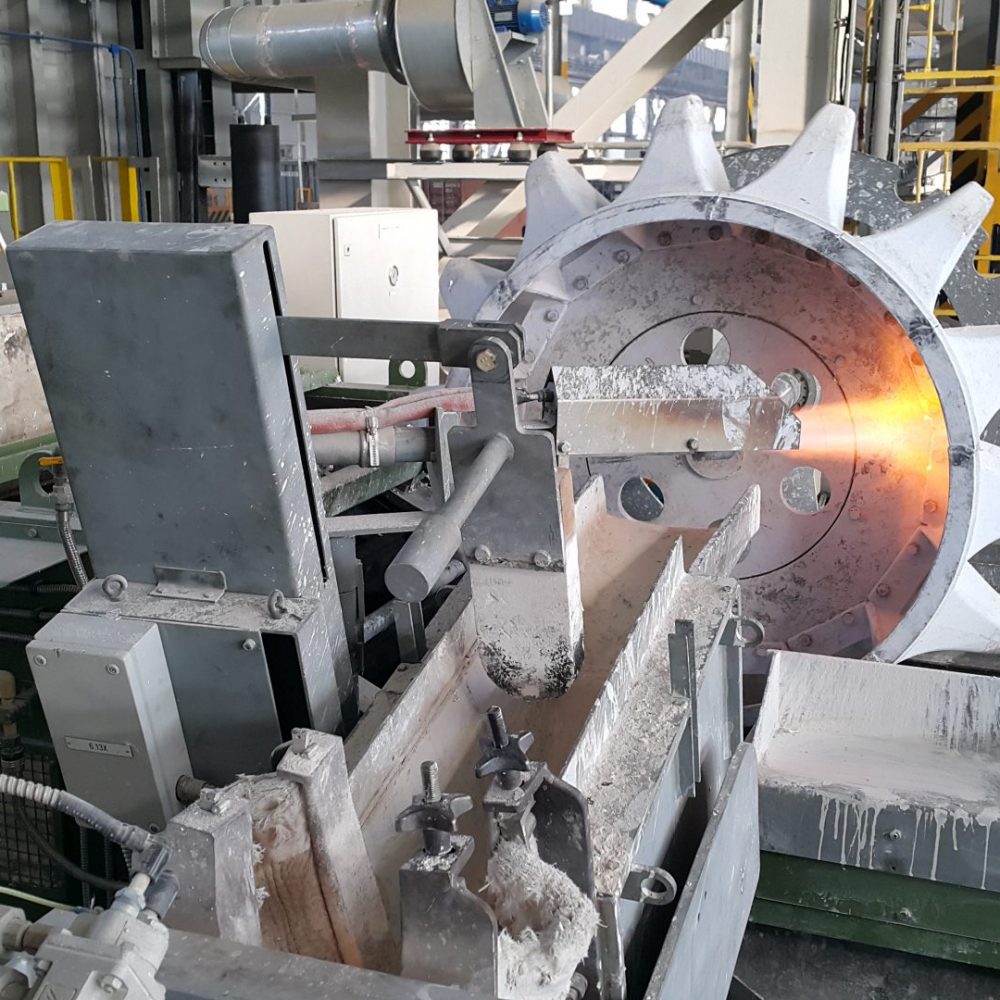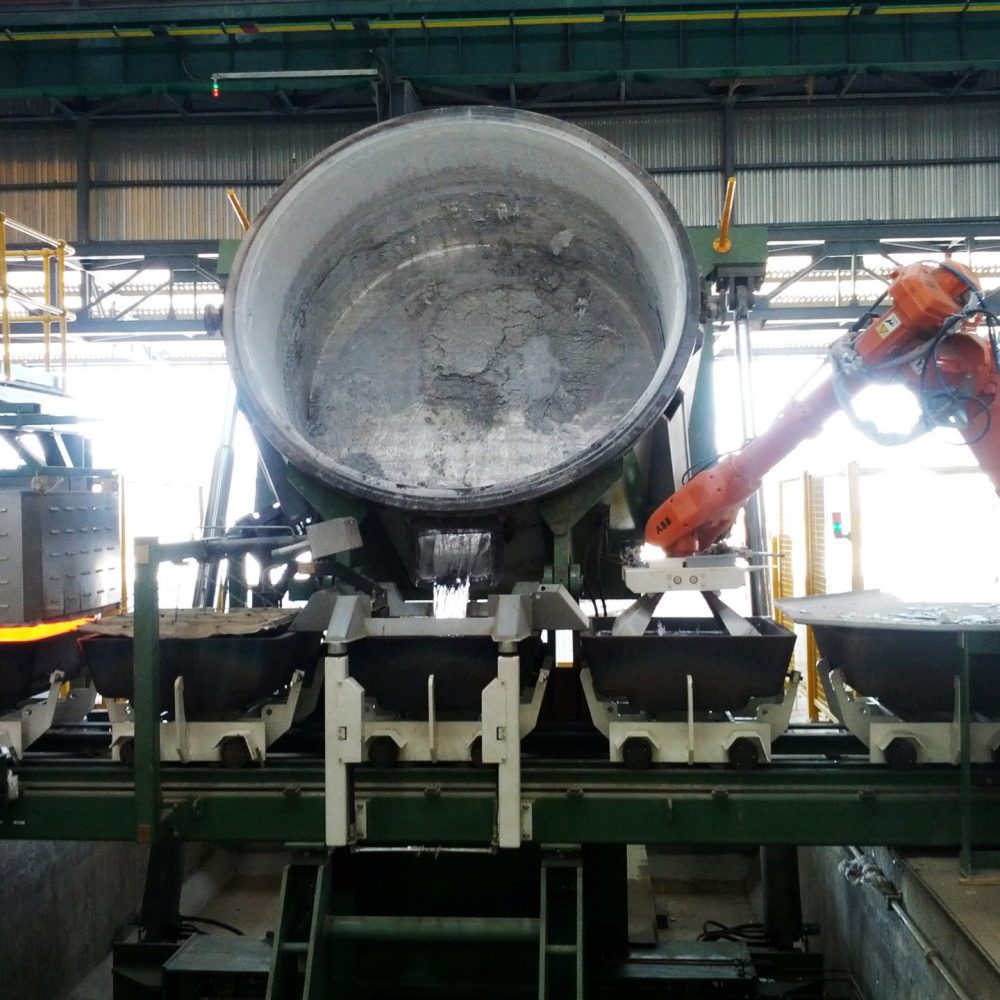STAS Inc., based in Chicoutimi, Quebec, Canada, acquired aluminum casting technologies from o.d.t. Engineering Pty. Ltd. in Australia. The purchase enables STAS to engage in the marketing, sales, and fabrication of casting and material handling equipment and production consumables. This includes ingot casting and stacking (ICS) for aluminum and magnesium (ingot weights of 6-25 kg) and sow casting and stacking (SCS) for all sow weights. STAS is granted the exclusive and perpetual right to use o.d.t.’s name for the continued operation of the business. Meanwhile, o.d.t. retains the right to sell spare parts and perform repairs on existing equipment currently in operation.
The ICS system (Figure 1) is able to continuously cast both pure and foundry alloys at a rate of up to 32 tph. The CASTfill pouring wheel directs metal into the mold in a streamlined manner with minimal turbulence or splashing, ensuring low oxide levels for a higher quality product with a good surface finish. The CASTmold, which was developed by o.d.t. and a team of research professionals, was designed to improve overall production rate, achieve longer service life, and improve safety and performance. This was achieved by improving the solidification rate, minimizing localized boiling of cooling water, better release of the ingot from the mold, and less shrinkage or formation of cavities on the ingot surface. After the casting process is completed, the machine’s stacking unit automatically packages and straps the aluminum ingot into compact stacks for easy transportation.

The SCS system (Figure 2) can be tailored to a range of sow sizes and can be operated on a continuous or semi-continuous basis, depending on metal supply capacity. Molten aluminum is poured from hydraulically operated crucible tilters directly into the sow molds. The automatic sow filling system ensures a smooth, accurate pour resulting in consistently sized sows. Two tilters can be installed in parallel to allow for smooth changeover between crucibles, thus allowing for a continuous casting operation. The sow molds are supported on individual trolleys that are interlinked to form a continuous chain. After pouring, the metal is robotically skimmed to remove any dross. Solidified sow ingots are removed from their molds via a vacuum demolding device. The sows are carried along conveyors to be weighed, marked, and stacked. The completed sow stacks can then be removed via a forklift.

With this acquisition, STAS extends its portfolio of complementary products for aluminum casting, further establishing itself as a world class supplier of innovative equipment and paving the way for new business opportunities.
Editor’s Note: This interview first appeared in the October 2018 issue of Light Metal Age. To receive the current issue, please subscribe.
